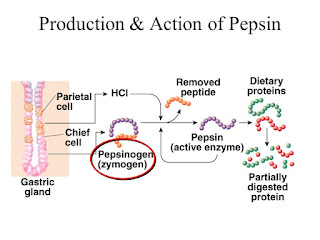The structure of Chimeric Antigen Receptor (CAR) IV - Intracellular Signaling Domains
Intracellular Signaling Domain(s)
Intracellular signaling domains get the most attention as we talk about CAR-T cell therapy because it affects how CAR constructs are generated in the T cells and initiate CAR co-stimulation.
The intracellular signaling domain is the research topic where all the cell engineering happens and gets all the attention for future improvement. What co-stimulatory domain(s) is/are presented in the CAR? What co-stimulatory domains need to be avoided to decrease the likelihood of activation-induced cell death (AICD)? These are questions that cell engineers and researchers ask as they finetune the fourth component of a chimeric antigen receptor to target tumor cells.
Since the first generation of CARs is built in the late 1990s, we now mainly have three generations of CARs as the iteration happened.
First-generation CARs
The very first generation of CARs built in the late 1990s contains a CD3ζ or FcRγ signaling domain.
Clinical Responses
Most of the first-gen CARs rely on the activation of CAR-T cells through the CD3ζ derived immunoreceptor tyrosine-based activation motifs. However, this alone is not enough to generate any significant T-cell responses.
This is where the thoughts of adding a co-stimulatory domain took place, hence the second-generation CARs.
Second-generation CARs
One co-stimulatory domain in series with CD3ζ is added in second-generation CARs. The combo of CD28 & CD3ζ and the combo of 4-1BB and CD3ζ are the foundations of the two FDA-approved CAR-T cell therapies.
Clinical Responses
These cell therapies demonstrated strong therapeutic responses in chronic lymphoblastic leukemia, B-cell acute lymphoblastic leukemia, diffuse large B-cell lymphoma, and multiple myeloma. That being said, these two combos are quite different.
The CD28-CD3ζ and the 4-1BB-CD3ζ co-stimulatory domains
The CD28-CD3ζ combo CARs differentiate into effector memory T cells and use mainly aerobic glycolysis.
On the other hand, the 4-1BB-CD3ζ combo CARs differentiate into central memory T cells and show increased mitochondrial biogenesis and increased oxidative metabolism.
Other co-stimulatory domains
There are more combos with other co-stimulatory domains that are being studied, in addition to CD28 and 4-1BB. They are inducible T cell co-stimulator (ICOS), CD27, MYD88, CD40, OX40 (CD134).
There are some serious adverse events that happened in clinical trials and the efficacy has room for improvement. This is when the idea of adding one more co-stimulatory domain to the intracellular signaling domain happened.
Third-generation CARs
We can treat co-stimulatory domains as lego or building blocks. We can stack one on top of another. One of the third-generation CARs that is being studied is the CD28-4-1BB-CD3ζ combo. As shown in the picture, you can see that we are stacking things up.
Clinical Responses
Third-generation CARs have shown strong cytokine production in lymphoma and pulmonary metastasis. However, in leukemia and pancreatic cancel model in vivo, the third-gen CARs did not outperform the second-gen CARs.
What will the future generations of CARs look like? Will we stack even more co-stimulatory domains or other functional domains? We will see, and this is why science is always exciting.






Comments
Post a Comment